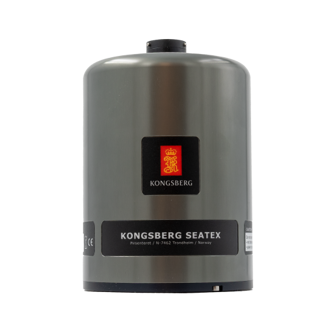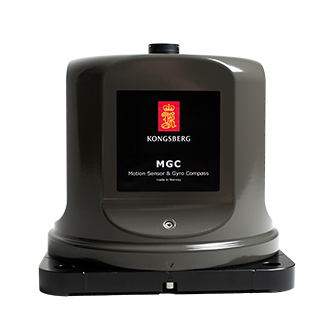
Seapath 385
GNSS aided Inertial Navigation System
The all-new Seapath 385 is based on the legacy of the Seapath 300-series and incorporates new hardware and advanced navigation algorithms. The Seapath 385 is developed specifically for hydrographic surveying where high-precision heading, position, velocity, roll, pitch, heave and timing are critical measurements. Our solution combines state-of-the-art inertial technology and processing algorithms with multi-frequency GPS, GLONASS, Galileo, Beidou, QZSS and geostationary satellite signals.
Sensor fusion
Robust against GNSS dropouts
The Seapath is robust against GNSS dropouts by using the inertial sensor for dead reckoning navigation, providing all measurements even when GNSS is not available. The updated navigation algorithms ensure market leading dead reckoning performance. The Seapath 385 adds another layer of robustness in the unique use of both GNSS antennas for positioning in addition to heading.
Post-processing of the Seapath data is possible to further enhance accuracy in position and attitude. The Seapath 385 includes a new post-processing format that contains all necessary data and system configuration in a single file. Centimetre position accuracy can be achieved through downloaded satellite orbit and clock data or data logged from base stations.
System configuration
The Seapath 385 is built on a new hardware platform, delivering improved processing capabilities and upgraded interfaces. The Seapath 385 is a modular rack-mounted system with a dedicated Processing Unit that connects to the inertial sensor and two GNSS antennas. The Processing Unit runs all critical computations independent from the user interface on the HMI Unit, which ensures continuous and reliable operation. The operator software can also be installed on the customer’s computer and used instead of the HMI Unit.
The Seapath 385 Processing Unit has 8 configurable RS-232/422 serial lines in addition to several Ethernet ports available over 5 LANs. Data for all 6 degrees of freedom can be output through NMEA messages or proprietary messages to external sensors and survey computers. Several simultaneous GNSS augmentation sources can be connected through configurable serial lines or Ethernet. The Seapath 385 provides accurate measurements with a data rate of up to 200 Hz at multiple monitoring points, to accommodate sensors or systems relying on motion or position data across the vessel.
Key features
- 0.005° to 0.015° roll & pitch accuracy depending on MRU/MGC
- 1 cm/1% real-time heave accuracy for heave periods up to 10 seconds
- 1 cm/1% delayed heave accuracy by use of PFreeHeave® algorithm for heave periods up to 50 seconds
- Dual 555-channel multi-frequency, multi-constellation receivers
- All available GPS/GLONASS/Galileo/BeiDou/QZSS satellites used in position solution
- RTK, Galileo HAS, Fugro G4/G4+ and more corrections supported
- Includes SBAS corrections (WAAS, EGNOS, MSAS, GAGAN)
- Includes unique high-precision non-differential position algorithm
- Spoofing detection and rejection capabilities
- All data have the same time stamp and to an accuracy of 0.001 s to the actual measurement time
- Precise Time Protocol (PTP) and NTP available for time critical applications over Ethernet
- Data available in up to eight different monitoring points
- Up to 16 configurable output ports on Ethernet or serial line
- Logging of raw satellite and IMU data possible
- Remote support capabilities
Product range
Get in touch!
In addition to our many offices around the world, our global dealership network enables distribution to more than 100 countries to meet customer needs at any location. Find your local dealership or Kongsberg Discovery office here.
Related products
We offer comprehensive after-sales assistance
-
24/7 Technical support
Our Technical Support team is readily available to provide global 24/7 support and can respond to resolve any issues at any time, wherever you are located in the world.
-
Training
We can provide detailed training on the use of our products to ensure your crew is equipped with the necessary operational competence to minimise technical risk and maximise return on your asset investment.


